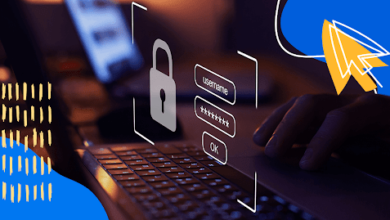AI and Automation: The Impact on Data Security in the Digital Age

Table of Contents
- Importance of Data Security
- Common Data Security Threats
- Best Practices for Data Protection
- Emerging Technologies in Data Security
- Case Study: Successful Data Security Implementation
- Future of Data Security
Importance of Data Security
In today’s digital landscape, data security is more critical than ever. The growing number of data breaches and cyberattacks emphasizes the necessity for robust data security solutions to protect sensitive information. Proactive actions and attentiveness are necessary to sustain the integrity and confidentiality of data and bolster an organization’s reputation and trustworthiness. Investing in advanced data security not only defends against malicious attacks but also fosters consumer confidence, ensuring the long-term sustainability of businesses.
Data breaches and damaging a brand’s reputation can result in substantial financial losses. Recent studies suggest that the average data breach cost 2022 was around $4.24 million, emphasizing the high stakes involved. Therefore, companies must invest in comprehensive security measures that include advanced technologies and employee training. This ensures resilience against cyber threats and safeguards the organization’s digital assets. In turn, businesses can avoid the devastating impacts of data compromise, keeping their operations smooth and trustworthy.
Common Data Security Threats
The array of threats to data security is both diverse and sophisticated. Among the most prevalent are:
- Ransomware:This virus encrypts a victim’s files, and the attackers demand a ransom to restore access. Ransomware attacks have dramatically risen, with high-profile incidents causing significant disruptions in several industries.
- Phishing Attacks are attemptsby fraudsters to obtain confidential information by posing as a trustworthy entity in electronic communications. Despite being one of the oldest cyber threats, phishing remains highly effective due to sophisticated social engineering techniques.
- Insider Threats:Dangers from inside the company often involve employees or contractors with sensitive data access. These threats can be particularly challenging to mitigate as they involve trusted individuals with privileged access.
Understanding these threats is the first step toward devising comprehensive security strategies. Organizations must stay informed about evolving cyber threats to safeguard their data effectively. By acknowledging the ever-changing landscape of cyber threats, businesses can better prepare and implement more robust security measures to protect their critical data assets.
Best Practices for Data Protection
Implementing effective data protection protocols is critical to mitigating risks. Here are some best practices:
- Robust Encryption:Secure critical data when it’s not in use during transmission to prevent unauthorized access. Robust encryption algorithms add multiple layers of security to sensitive information, making it more complicated even if they manage to obtain access, even if hackers successfully decode the data.
- Regular Audits and Assessments:Conduct periodic security and vulnerability analyses to find and fix such flaws. Organizations may enhance their security protocols regularly by mitigating newly discovered vulnerabilities and maintaining the robustness of their security framework.
- Employee Training:Educate employees about recognizing and preventing phishing attacks and other social engineering tactics. Human error remains a significant risk factor; hence, continuous training can empower employees to act as the first defense against cyber threats.
- Multi-Factor Authentication (MFA):Implement MFA to add an extra layer of security beyond password protection. Multiple verification forms are required for MFA users, significantly reducing the risk of unauthorized access.
These practices form the backbone of a comprehensive data security strategy. By incorporating them, organizations can create a resilient security posture that effectively guards against diverse cyber threats.
Emerging Technologies in Data Security
The fast-paced world of data security continuously benefits from technological advancements. Noteworthy innovations include:
Artificial Intelligence (AI): AI-driven security solutions are revolutionizing the industry. They offer real-time threat detection and response capabilities, significantly reducing the window of vulnerability. New AI technology is transforming how organizations approach security measures, making them more efficient and precise. AI algorithms can analyze vast amounts of data to identify patterns and anomalies, enabling quicker detection of potential threats and more effective responses to cyber incidents.
Blockchain: This technology ensures data integrity through decentralized ledgers, making it harder for unauthorized parties to tamper with data. Blockchain is gaining traction for its potential in secure data transactions and verification processes. Its transparent and immutable nature makes it ideal for applications requiring high reliability and trust, such as financial transactions and supply chain management.
These emerging technologies exemplify the innovative approaches being adopted to enhance data security. By leveraging these advanced tools, businesses may better safeguard their data and stay ahead of cyber threats with valuable data assets.
Case Study: Successful Data Security Implementation
Consider the example of a leading tech company that recently overhauled its data security strategies. The company significantly reduced data breaches by leveraging advanced technologies and comprehensive security frameworks. Continuous monitoring, adaptive security measures, and employee training were crucial to their success. Through diligent efforts and embracing cutting-edge technologies, they created a security-first culture that substantively mitigated risks and bolstered overall cyber resilience.
The case study underscores the importance of a holistic approach to data security. By integrating multiple layers of protection, organizations may establish a stronger and more resilient security posture. Regularly updating security protocols and educating employees further enhance this approach, ensuring the organization remains well-protected against evolving threats.
Future of Data Security
The data security industry is expected to undergo significant changes in the future. Advancements in quantum computing promise to revolutionize encryption methods, offering unprecedented levels of protection. Applications of quantum physics principles may be found in quantum encryption to create highly secure communication channels that are virtually impossible to hack. As these technologies become more mainstream, they will provide enhanced security measures to protect against increasingly sophisticated cyber threats.
Zero-trust architecture, which assumes no implicit trust and verifies each access request, is set to become the standard approach in mitigating data breaches. Zero-trust models require constant authentication and verification, ensuring only authorized users can access sensitive data. This strategy dramatically lowers the possibility of insider threats and limits the potential impact of data breaches.
Staying updated with these trends and adapting to new technologies will be crucial for organizations aiming to maintain robust data security in the future. By remaining proactive and innovative, they can effectively counter evolving cyber threats and ensure the safety of their valuable data. Organizations that invest in these emerging technologies and continuously refine their security strategies will be better equipped to navigate the complex and dynamic data security landscape.




